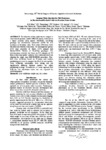Por favor, use este identificador para citar o enlazar este ítem:
http://www.alice.cnptia.embrapa.br/alice/handle/doc/995749| Título: | Genomic wide-selection for tick resistance in Hereford and Braford cattle via reaction norm model. |
| Autor: | MOTA, R. R.  TEMPELMAN, R. J.   CARDOSO, F. F.   AGUILAR, I. G.   LOPES, P. S.   |
| Afiliación: | Rodrigo Reis Mota, Michigan State University; Robert John Tempelman, Michigan State University; FERNANDO FLORES CARDOSO, CPPSUL; I. G. AGUILAR, INIA; Paulo Sávio Lopes, UFV. |
| Año: | 2014 |
| Referencia: | In: WORLD CONGRESS ON GENETICS APPLIED TO LIVESTOCK PRODUCTION, 10., 2014, Vancouver, British Columbia, Canada. Proceedings... Champaign: ASAS, 2014. |
| Descripción: | The objective of this study was to compare a conventional genomic model (GBLUP) and its extension to a linear reaction norm model (GLRNM) specifying genotype by environment interaction (G*E) for tick resistance in Brazilian cattle. Tick counts (TC) from 4,363 Hereford and Braford cattle from 146 contemporary groups (CG) were available of which 3,591 animals had BovineSNP50 Illumina v2 BeadChip genotypes. The reaction norm covariate was based on CG estimates of TC from a first-step model. Analysis was conducted based on adapting the single step GBLUP/REML procedure. Fivefold cross validation based on K-means and random partitioning was used to compare the fit of the two models. Cross validation correlations were strong and not significantly different between models for either partitioning strategy. Nevertheless, it seems apparent that G*E for tick infestation exists and can captured by GLRNM models. |
| Thesagro: | Gado de corte |
| Tipo de Material: | Artigo em anais e proceedings |
| Acceso: | openAccess |
| Aparece en las colecciones: | Artigo em anais de congresso (CPPSUL)  |
Ficheros en este ítem:
| Fichero | Descripción | Tamaño | Formato | |
|---|---|---|---|---|
| Motaetal.pdf | 641,67 kB | Adobe PDF |  Visualizar/Abrir |









